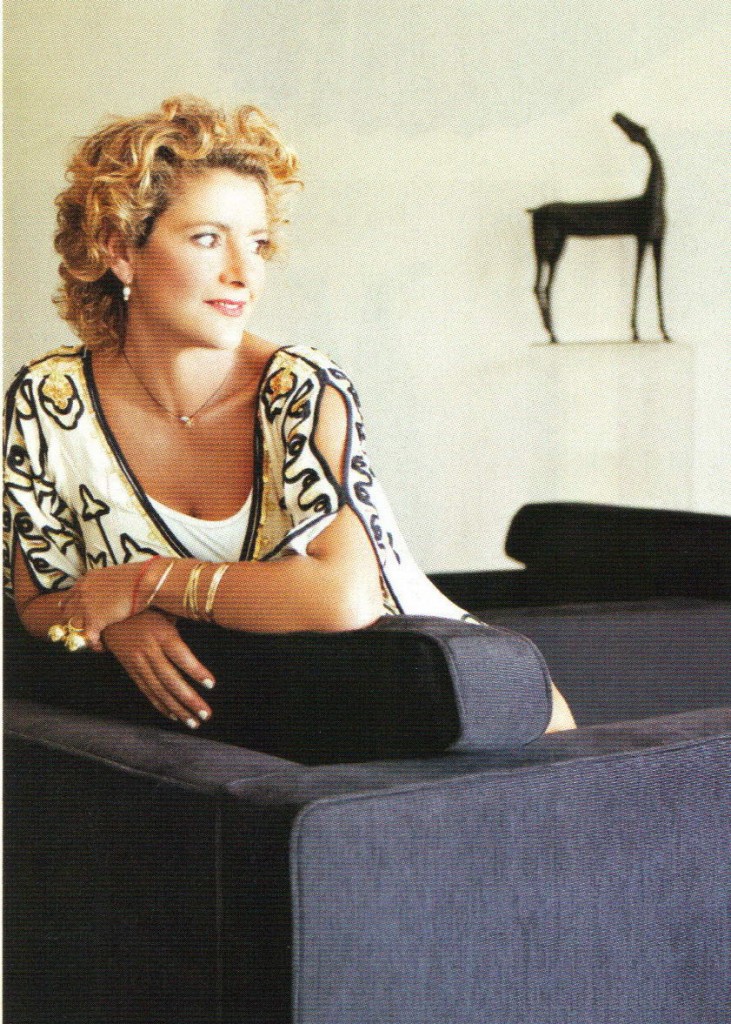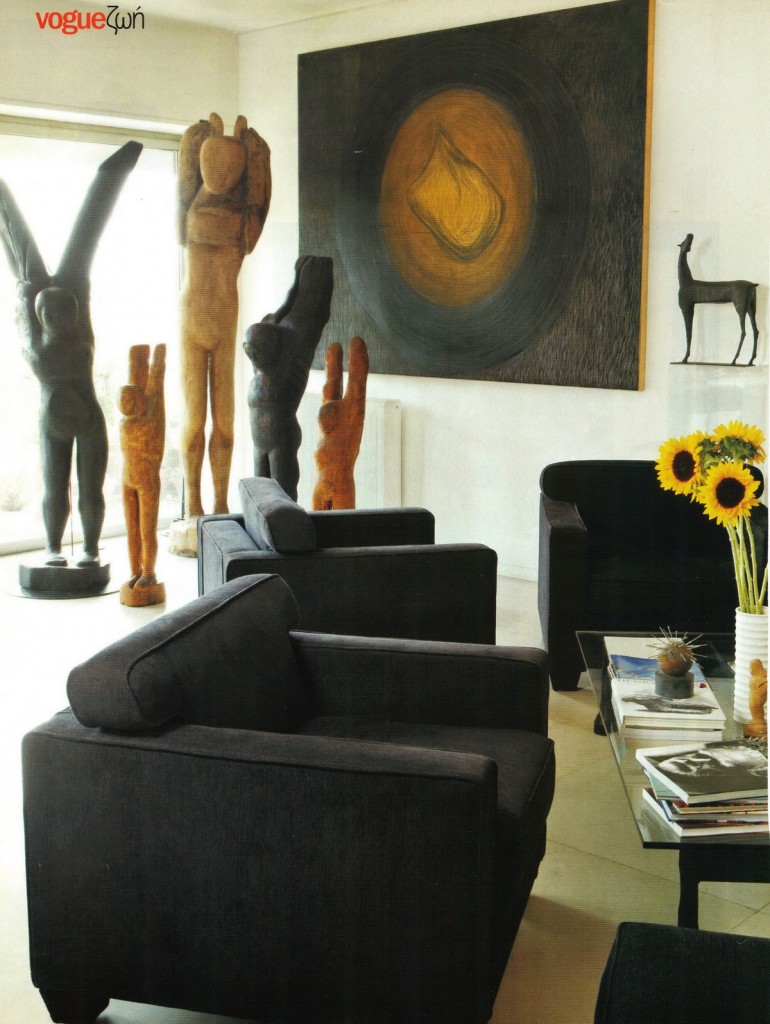VOGUE February 2006
VOGUE
February 2006
Rania Georgiadou
With art as a partner
Dressed in white, with a sparkling white smile, cool and friendly, the charming lady of Medusa welcomed us in an exemplary way. She had just returned from the Biennale of Istanbul, “an always great trip” which failed to satisfy her in artistic terms this time. “This year’s theme was the urban landscape. A lot of trash, allow me to say. The one thing I found interesting during a private showing was an exhibition in an amazing old building, six-floor high with a central patio, organised by the Biennale’s curator, Herman Hesse. The building, wonderfully restored by a couple of architects-collectors who work as interior designers and dealers in special old furniture and have their headquarters there, hosted works of contemporary art placed inside and in the garden and blending in exquisitely with the antique furniture and the architecture. An excellent match”. It is probably this kind of match that she likes about her old olive mill in Paros.
“Precisely. I retained the character of the building, but the furniture and the works are contemporary. I love my flat in Athens, I find it very pleasant, but in Paros it’s different: I have worked on it, built it, done all the repointing myself”. She shines when she talks about the island. “I wish I can enjoy every single day, whether I am working in Medusa or spending time in Paros. The ability to divide time between art and my garden fills me with joy and satisfaction. I believe we should all strive for a quality of life, each in his or her own way”.
Self-made, she opened her first gallery upon leaving school—she knew she was going into art since she was thirteen! “Within six months, Medusa had moved from Pangrati to 7 Xenokratous Street! I was certain this was the career I should pursue, and that everything would go well”. The first exhibition was “The collection of Chloe”, with works that Alexis Akrithakis kept for his daughter, Chloe. “Alexis comes one day”, she remembers, “with a huge amount of disparate material from all his periods, from the ‘tsiki-tsiki’ to the monochromes and the wooden works. Luckily, Iolas, to whom Akrithakis had introduced me, called me and I said ‘what should I do?’ It must have been something in my voice, because he came over and proceeded to give me, without saying a word, the greatest lesson on how to put up an exhibition. We created an amazing environment. Since then, every time I set up an exhibition I feel as if he is next to me”. She worked with him during his last years, when he lived in Greece. “We did some ten shows together, including an amazing one with Matta, Takis, Stivenson, Lazongas. He was an intense man, way outside and ahead of conventions”. The special people she met through her work and her artists are important chapters in her life. “The reason I focus on Greeks is because I believe we have some great contemporary artists, but unfortunately there is no mechanism for promoting them abroad. Every time I organise something abroad with my own means, it leads to something new which I am not sure I can handle”.
Does the gallery follow a specific direction?
“I wouldn’t say that. Nakis Tastsioglou makes geometric sculptures, Vally Nomidou realistic ones, Maria Vlanti ceramic sculptures, Annita Xanthou is more conceptual, Babis Venetopous and Marianna Strapatsaki do video art, Yannis Tzermias is an expressionist, Yorgos Rorris a representational painter… Each of them follows a different course— Anton, Grigoriadi, Bebi, Lefkochir. The one direction for me is quality. What interests me in art is where it gets you, irrespective of concepts and materials: it is about works which intrigue me, shake me up, make me dream”. These days the gallery is preparing for a group show, “Egg’s Encomium”, curated by Maria Marangou—an all-female exhibition which has her intrigued. The artists involved and the unexpected title are promises for an interesting outcome.
A last and possibly nosy question: is it true that you have your own small collection?
“Yes, my only consumerist mania is about art. Clothes don’t matter much to me, I always play around mixing old and new, depending on my mood. If I could, I would never sell; I would only buy art. Last year in Basel, I wished I had a blank cheque on me! Many years ago, in order to buy the gallery I had to sell two works by Takis in one night. I still regret losing them”.
Art on a daily basis, at work or at home—“imagine what it would be to have a Calder in the garden!”; this is the main route, the orientation of Maria Demetriades.








